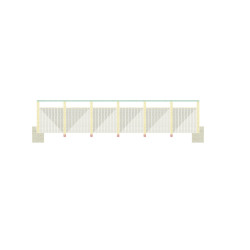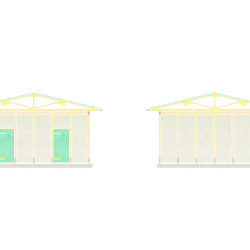Architekt Max Otto Zitzelsberger . photos: © Sebastian Schels
Berngau is a village in eastern Bavaria (Oberpfalz). The site of the old municipal sewage treatment plant is no longer in use and should be converted. There is still a trickling filter that was used to purify waste water until the 1990s.
Berngau is known for its civic commitment to intergenerational justice and the active integration of marginalized groups. People with learning difficulties and also with intellectual disabilities are part of the community there. At the Berngau school, these young people are a natural part of the classes.
The idea now was to build a green classroom in the form of a pavilion for the local schools and a local facility for mentally disabled people.
The fallow areas of the old sewage treatment plant are ideally suited for this purpose. The old trickling filter was not demolished, but integrated into the concept as a walk-in sculpture. Next to the pavilion, a fence towards the main street now provides noise and privacy protection and protects the children from the new clarifier. A bridge connects the way to school with the site of the old sewage treatment plant and is used for access. A wooden crown was placed on the trickling filter, which can be seen from afar. This underlines the importance of the green classroom and the social idea behind it.
Overall, an ensemble of pavilion, trickling filter, fence and bridge was created. The individual building blocks interact spatially. They are all at an angle to each other, as if they had arisen accidentally.
Materials from the municipal building yard, containers and intermediate building materials can be found on the site. This should stay that way. An old tar area in front of the pavilion is also not to be renewed for the time being. The central idea is to celebrate the state of incompleteness. Imperfect spaces are always interesting for children – in sociology one speaks of possible spaces. The so-called wastewater treatment plant (in German “Kläranlage”) becomes an explanatory plant (in German “Erkläranlage”). The new site will become an enabling space.
The pavilion is somewhat reminiscent of a Greek temple. It stands on a massive base protruding from the earth. The main reason for this is the flooding in spring. The trickling filter, with its ideal construction and fine ribs, is reminiscent of a round temple. The whole ensemble of pavilion, trickling filter, fence and bridge looks a bit like an acropolis. Here, too, the individual architectures appear to be fortuitously side by side.
_

















